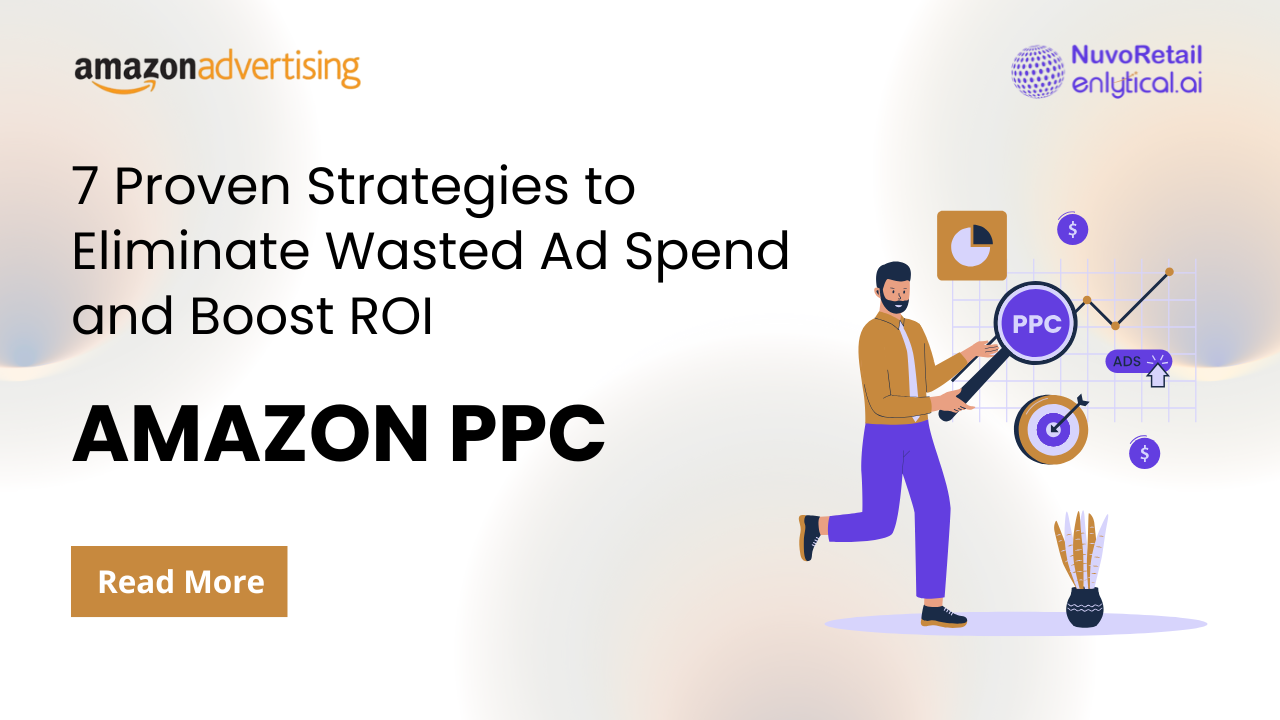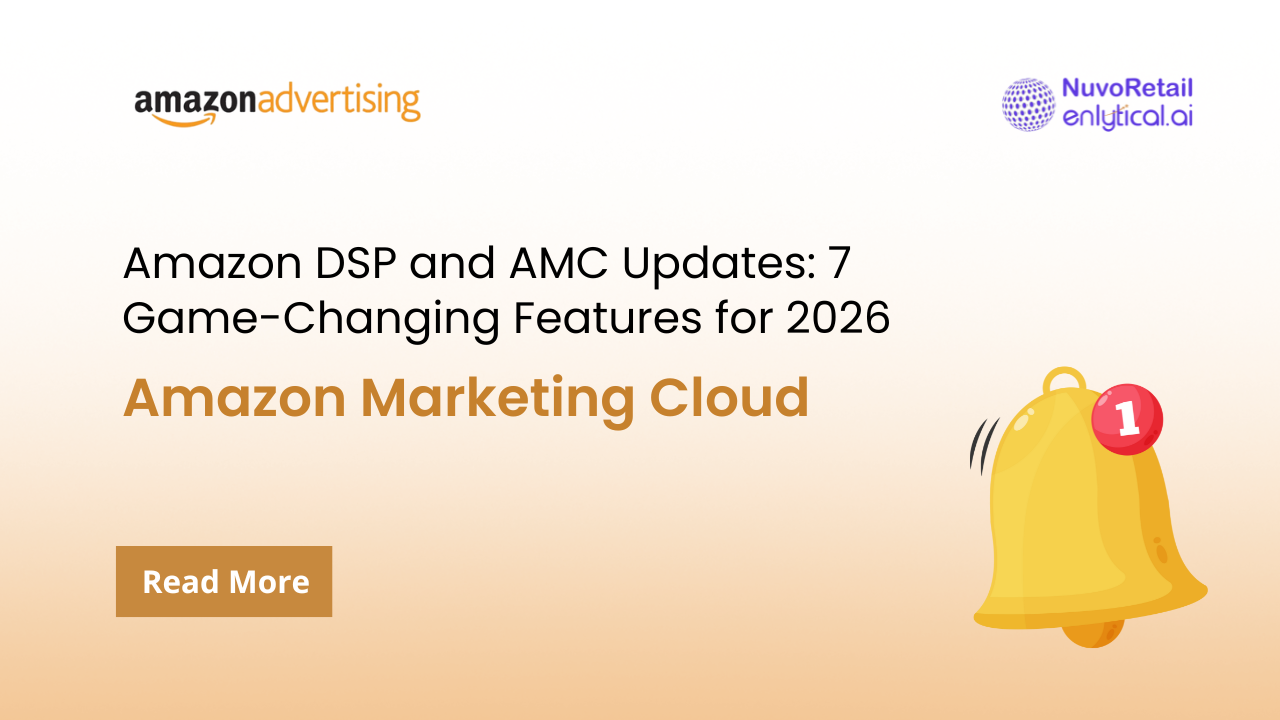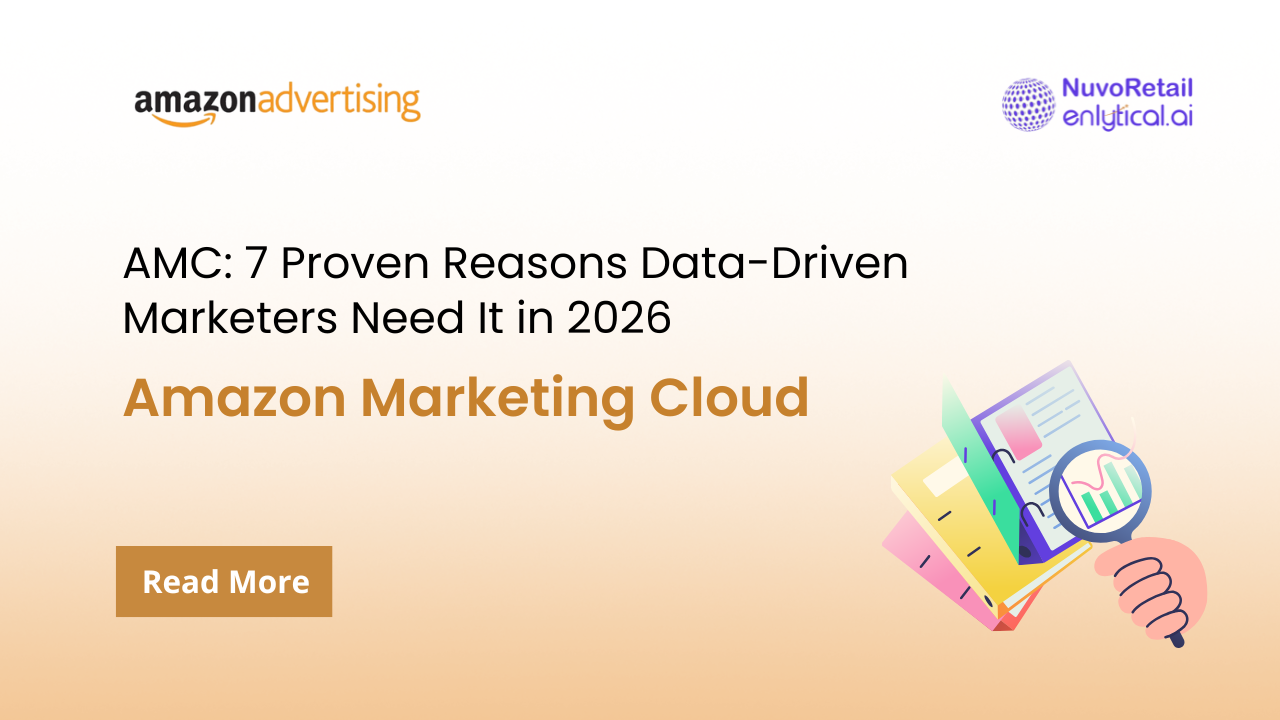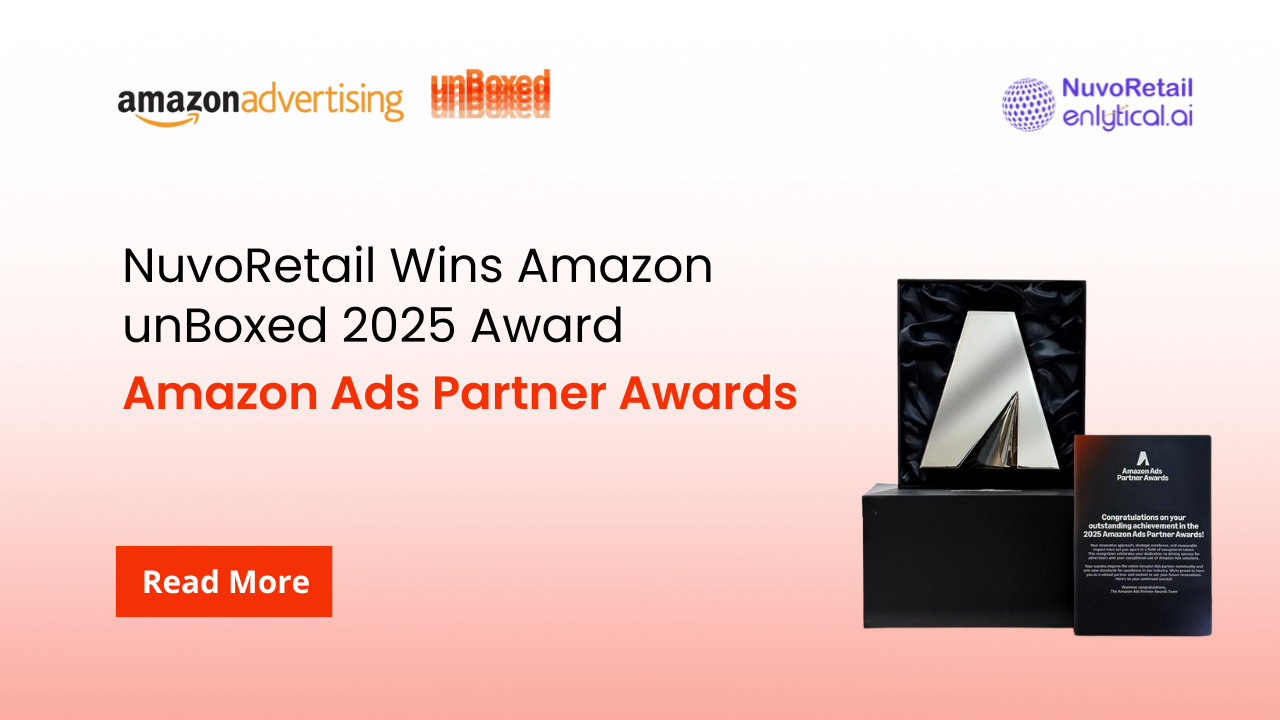Amazon PPC campaigns are burning through your advertising budget faster than you can say “sponsored product.” If you’re among the millions of sellers struggling with inefficient ad spend, you’re not alone. Studies show that poorly optimized Amazon PPC campaigns waste up to 40% of their budget on irrelevant clicks and underperforming keywords.
The good news? With the right strategies, you can dramatically reduce wasted spend while boosting your return on investment. This comprehensive guide reveals seven proven methods to optimize your Amazon pay per click advertising and ensure every dollar works harder for your business.
Table of Contents
- Understanding Amazon PPC Waste: The Hidden Profit Killer
- Strategy 1: Master Negative Keywords to Block Irrelevant Traffic
- Strategy 2: Optimize Your Product Listing for Higher Conversion Rates
- Strategy 3: Implement Smart Bid Management Techniques
- Strategy 4: Leverage Advanced Keyword Research for Better Targeting
- Strategy 5: Use Campaign Structure Best Practices
- Strategy 6: Monitor and Optimize Match Types Effectively
- Strategy 7: Analyze Performance Data Like a Pro
- Conclusion: Your Roadmap to Efficient Amazon PPC
Understanding Amazon PPC Waste: The Hidden Profit Killer
Before diving into solutions, it’s crucial to understand what constitutes wasted ad spend in Amazon PPC marketing. Wasted spend occurs when your campaigns generate clicks that don’t convert into sales, targeting irrelevant search terms, or bidding too high for low-value keywords.
Common sources of waste include:
- Broad match keywords triggering irrelevant searches
- High bids on low-converting terms
- Poor product listing optimization leading to low conversion rates
- Inadequate negative keyword lists
According to Amazon Ads, sellers who optimize campaigns effectively can significantly cut down wasted spend and improve ROI.
Optimizing Amazon PPC campaigns requires a structured and data-driven approach. Many sellers lose money because their ads are not targeted well, their listings are weak, or their bidding strategies lack refinement. To make the most of your advertising budget, it’s essential to focus on proven strategies that directly impact ROI. The key is not just spending less, but ensuring every click has a higher chance of converting into a sale. Below, we’ve highlighted seven actionable strategies that can help you reduce wasted ad spend, optimize your campaigns, and achieve sustainable growth on Amazon.

Strategy 1: Master Negative Keywords to Block Irrelevant Traffic
Negative keywords are your first line of defense against wasted Amazon PPC spend. These powerful filters prevent your ads from showing for irrelevant search terms, ensuring your budget targets only qualified traffic.
Building Your Negative Keyword Arsenal
Start by analyzing your search term reports weekly. Look for terms that generated clicks but no conversions, or terms completely unrelated to your product. Common negative keywords for most products include:
- Brand names of competitors
- Terms indicating different product categories
- Size or color variants you don’t sell
- Words like “free,” “cheap,” or “used”
Campaign-Level vs. Ad Group-Level Negatives
Apply negative keywords strategically:
- Campaign-level negatives block terms across all ad groups
- Ad group-level negatives provide more granular control
For maximum efficiency in ppc in amazon, maintain a master negative keyword list and update it bi-weekly based on performance data.
Strategy 2: Optimize Your Product Listing for Higher Conversion Rates
Your product listing quality directly impacts Amazon PPC performance. A well-optimized listing converts more clicks into sales, reducing your overall advertising cost per acquisition.
Essential Listing Elements for PPC Success
Title Optimization: Include your primary keywords naturally while maintaining readability. Your title should clearly communicate what the product is and its key benefits.
Bullet Points: Highlight key features and benefits that address customer pain points. Use this space to differentiate from competitors and build trust.
Product Images: High-quality images showing the product from multiple angles, lifestyle shots, and infographic-style images explaining features significantly improve conversion rates.
A+ Content: Enhanced brand content helps educate customers and reduces bounce rates, improving your quality score for Amazon pay per click advertising.
Strategy 3: Implement Smart Bid Management Techniques
Effective bid management is crucial for controlling Amazon PPC costs while maintaining visibility. Amazon offers several bidding strategies, each suited for different campaign goals.
Understanding Amazon’s Bidding Options
Dynamic Bids – Down Only: Amazon lowers your bid in real-time when conversions are less likely, helping reduce wasted spend on low-intent traffic.
Dynamic Bids – Up and Down: Amazon adjusts bids both ways based on conversion likelihood. This strategy can increase costs but may improve overall profitability.
Fixed Bids: You maintain complete control over bid amounts. Best for experienced advertisers who prefer manual optimization.
Advanced Bid Management Tactics
Implement dayparting by analyzing when your target audience is most active. Adjust bids based on:
- Time of day performance patterns
- Day of week variations
- Seasonal trends specific to your product category
Regular bid optimization should account for keyword performance, competitor activity, and inventory levels.
Working with an experienced Amazon ads agency can simplify bid adjustments by applying data-driven strategies that minimize waste while maximizing visibility.
Strategy 4: Leverage Advanced Keyword Research for Better Targeting
Comprehensive keyword research forms the foundation of successful advertising on amazon. Beyond basic keyword tools, savvy sellers use multiple data sources to uncover high-converting, low-competition terms.
Multi-Source Keyword Discovery
Amazon’s Search Bar: Start typing your main keyword and note the autocomplete suggestions. These represent actual customer search patterns.
Competitor Analysis: Use tools like Helium 10 or Jungle Scout to analyze competitor listings and discover the keywords driving their traffic.
Customer Reviews: Mine your own and competitors’ reviews for language customers use to describe products and problems.
Search Term Reports: Your existing campaigns provide goldmine data on actual search terms triggering your ads.
Long-Tail Keyword Opportunities
Focus on longer, more specific phrases that often have:
- Lower competition
- Higher conversion intent
- More affordable cost-per-click rates
For example, instead of just targeting “coffee mug,” consider “ceramic coffee mug microwave safe” or “large coffee mug with handle.”
Strategy 5: Use Campaign Structure Best Practices
Proper campaign organization is essential for efficient amazon ppc ads management. A well-structured account allows for better budget control, easier optimization, and clearer performance tracking.
The Three-Campaign Structure
Automatic Campaigns: Let Amazon’s algorithm discover new keywords while you gather data on search terms and customer behavior.
Manual Exact Campaigns: Target your highest-converting keywords with exact match for maximum control over spend and relevance.
Manual Broad/Phrase Campaigns: Cast a wider net for keyword discovery while maintaining some control over relevance.
Portfolio-Level Organization
Group related campaigns into portfolios based on:
- Product categories
- Profitability tiers
- Seasonal patterns
- Geographic targeting
This structure enables easier budget allocation and performance comparison across product lines.
Strategy 6: Monitor and Optimize Match Types Effectively
Understanding when and how to use different keyword match types is crucial for amazon ppc optimization. Each match type serves specific purposes in your overall strategy.
Match Type Strategy Framework
Broad Match: Use sparingly for keyword discovery in new campaigns. Monitor closely and harvest successful terms for exact match campaigns.
Phrase Match: Provides middle ground between discovery and control. Useful for capturing variations of your core keywords.
Exact Match: Your highest-performing keywords should migrate here for maximum control and efficiency.
Dynamic Match Type Management
Start new keywords in broad or phrase match to gather performance data. Based on results:
- Promote high-performers to exact match campaigns
- Add poor performers as negative keywords
- Adjust bids based on conversion rates and profitability
Regular analysis of search term reports reveals opportunities to refine match type strategies and eliminate waste.
Strategy 7: Analyze Performance Data Like a Pro
Data analysis separates successful Amazon PPC marketers from those burning through budgets without results. Regular, systematic analysis helps identify trends, opportunities, and problems before they become costly.
Key Metrics to Track Daily
ACoS (Advertising Cost of Sales): Your primary profitability metric. Calculate total ad spend divided by attributed sales revenue.
Impression Share: Low impression share might indicate bid adjustments needed or increased competition.
Click-Through Rate (CTR): Low CTR suggests relevance issues with keywords or product listings.
Conversion Rate: Tracks how well your traffic converts to sales, indicating listing optimization opportunities.
Advanced Analytics Techniques
Cohort Analysis: Track how keyword performance changes over time to identify seasonal patterns or declining effectiveness.
Attribution Modeling: Understand how different touchpoints contribute to conversions, especially important for longer purchase cycles.
Competitive Intelligence: Monitor how your performance compares to category averages and adjust strategies accordingly.
Conclusion: Your Roadmap to Efficient Amazon PPC
Reducing wasted ad spend in Amazon PPC requires systematic optimization across multiple areas. From implementing comprehensive negative keyword strategies to optimizing product listings and analyzing performance data, each element plays a crucial role in campaign efficiency.
The seven strategies outlined above work synergistically to eliminate waste and maximize ROI. Start with negative keywords and listing optimization for immediate impact, then gradually implement advanced techniques like sophisticated bid management and match type strategies.
Remember, Amazon pay par click advertising optimization is an ongoing process. Markets change, competition evolves, and consumer behavior shifts. Successful sellers commit to continuous testing, learning, and refining their approach based on data-driven insights.
Partnering with an experienced Amazon ads agency like NuvoRetail can help you implement these strategies more effectively and ensure your campaigns deliver maximum ROI.
Take Action Now
Ready to slash your Amazon PPC waste and boost profitability? Start implementing these strategies today:
- Audit your current campaigns for obvious waste
- Build comprehensive negative keyword lists
- Optimize your highest-traffic product listings
- Set up proper campaign structure for better control
What’s your biggest Amazon PPC challenge? Share your experiences in the comments below.
Contact us today to see how NuvoRetail can help you optimize campaigns, maximize ROI, and scale effectively on the world’s largest marketplace.




